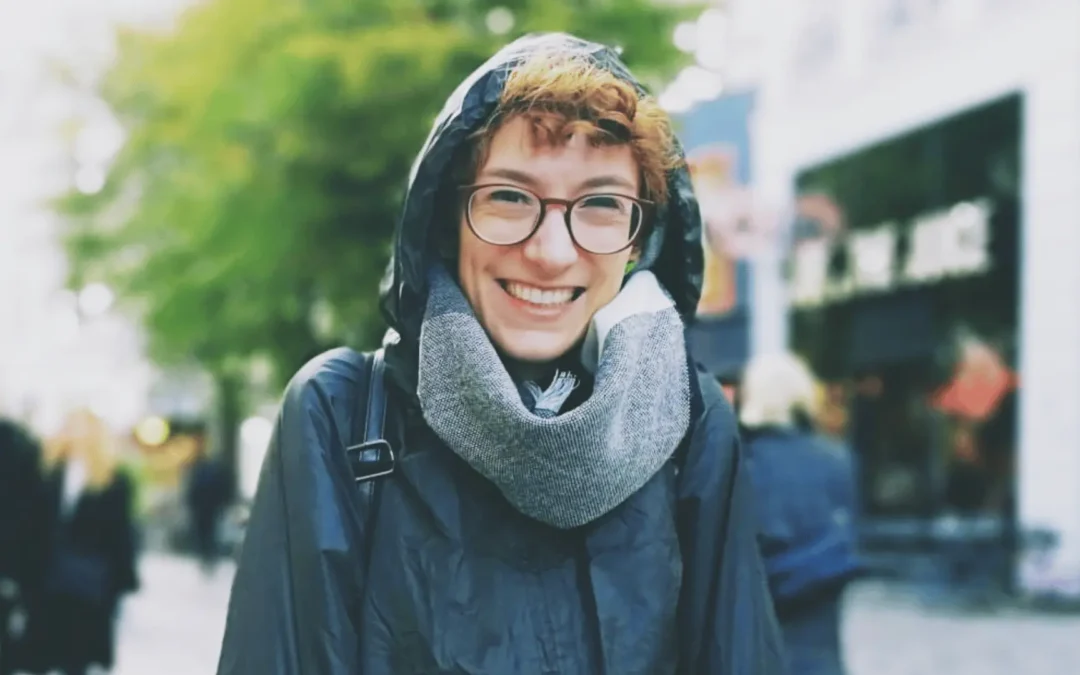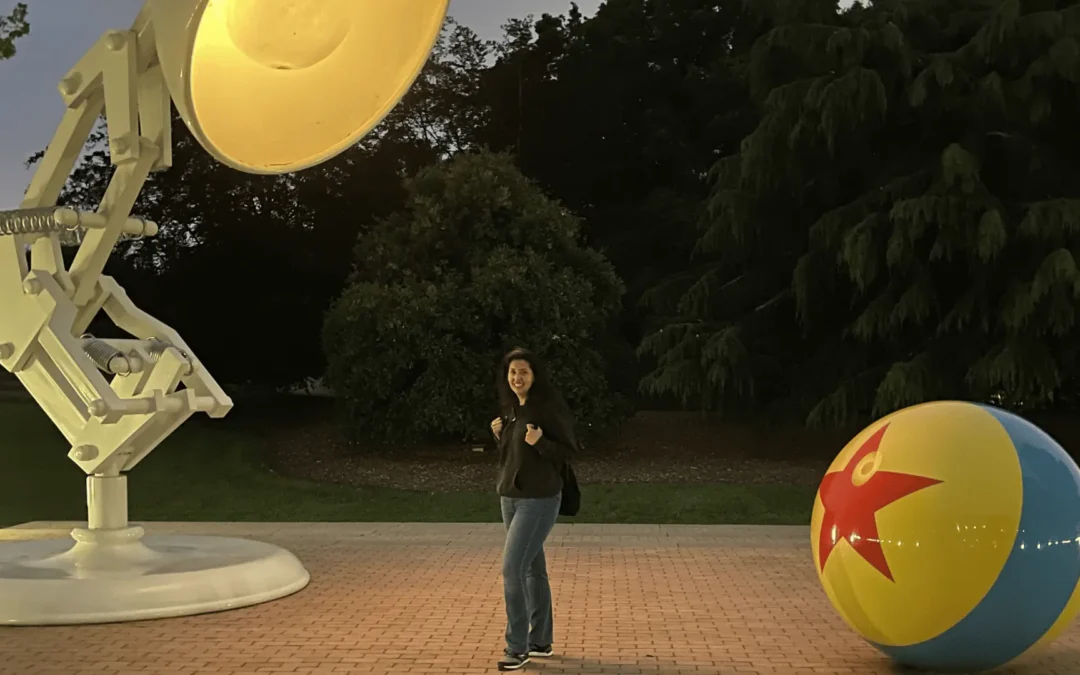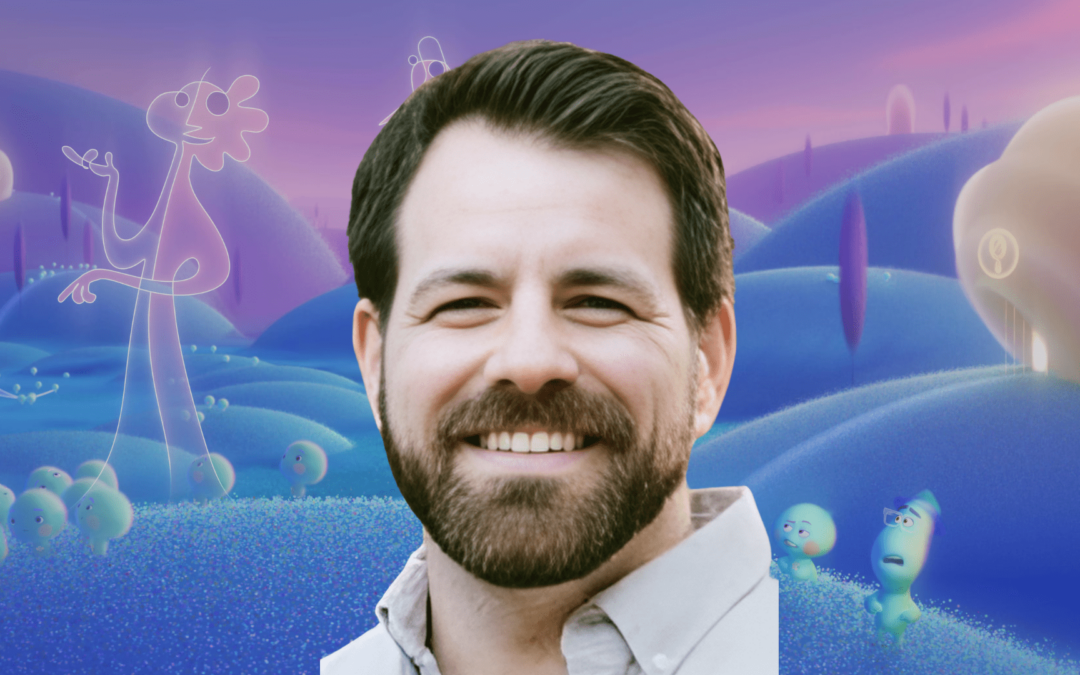
Ever wonder what it was like to be a 2D animator? How about what it was like to go from 2D to 3D at the very beginning? In this throwback post, hear all about it from mentor Dave Burgess who has worked for Hanna-Barbera, Disney, and DreamWorks.
This one’s from the vaults! This post is an oldie but a goodie—written by mentor Dave Burgess back in 2006.
As some of you may know, I currently work at DreamWorks in Glendale, where I’m a Supervising Animator. I just finished Over The Hedge, and am currently animating away on The Bee Movie.
Scene from Over the Hedge © DreamWorks
In 2001, I jumped headlong into the brave new world of computer-generated animation (to save valuable nano-seconds typing, I’ll call this “3D” from now on), but I worked doing hand-drawn, traditional animation (as above, I’ll call this “2D” from now on) for many years prior to this.
When I entered art school, I wanted to draw comics and never considered trying to find a career in animation. I took animation courses because I thought there was some aesthetic crossover with the graphic world of the comic, but after filming my first flip book and watching in awe as stuff I drew moved around, there was no going back to the still image for me.
Theme from original Smurfs © Hanna-Barbera
I animated at Hanna-Barbera doing Smurfs where the quota was 65 feet a week—no wonder it was called ‘limited’ animation! I animated on many Garfield prime-time specials. (Even after all these years, I can still draw Smurfs and Garfield pretty well. Yipes!) I animated at lots of commercial places doing Raid bugs, M&M’s, and Charlie Tuna. I worked for 11 years at Disney on a number of their most successful recent features – Beauty and the Beast, Aladdin, Lion King, Tarzan, etc.
Needless to say, I loved working in 2D.
The amazing visceral rush of getting that first rough pass onto the paper, the excitement of shooting the drawings and starting to play with the timing, the satisfaction of tying down the ruff and seeing the character peek out from all those pencil lines. This is some of the great 2D stuff that meant so much to me, and to probably any 2D animator.
3D animation has been with us for quite a while, and though the odd CG short film, or special-effects filled live-action movie, or rock video made me go “Wow, that was cool,” I never wanted to try 3D till I saw Pixar’s Toy Story in the theater.
TheToy Story trailer © Pixar
The amazing performances on those toy characters, Buzz and Woody in particular, really got to me. The incredible level of detail on the face—”Ohmigosh- look at those eye darts! Drool drool…”—seemed to me to be way beyond anything we could do in 2D. (This has more to do with image resolution and pencil line thickness than lack of talent/ability).
While I was at Disney, I begged to be allowed to train on the computer, but it took many years before it happened. When I did finally get off Atlantis and started doing character tests in Maya with the early Wild Life rigs, I was happy as a very happy clam.
Some of the things I love about working in 3D:
You don’t have to worry so much about drawing your character on-model—though it’s pretty easy to break the rig and go off-model in 3D.
There are no difficult angles to draw, as the camera can be placed anywhere.
It is so easy to add extra details to the performance; head shakes, ankle wobbles, etc. You can try anything pretty quickly, and ctrl-z if it doesn’t work, no tiresome erasing necessary!
Unfortunately, the studio stopped production on that film. So, my family and I decided to move up to the Bay area, and I took a job at PDI/DreamWorks, where I worked on Shrek 2 and Madagascar.
The dinner scene from Shrek 2 © DreamWorks
I loved working in the extremely collaborative 3D environment. 2D has always been a very department-centric art form, where each dept, like character animation, tends to communicate as little as humanly possible with other departments, such as layout, background, effects, etc. But in the 3D world, it felt more like all the departments were working together to make everything that ended up on screen look as wonderful as possible.
Some examples: the character technical directors (TDs) would try to figure out what the animators wanted with the rigs—like on
I’ve loved working in the 3D realm, and I think my animation has actually gotten better since making the switch.
Anyway, as I’m sure many of you are noticing, there just aren’t that many jobs out there for 2D animators these days. And if you want to keep improving your craft, you need to work. So, you’re facing the dilemma of hanging up your pencil and picking up your mouse.
Once you decide to do this, I hope you will make it a positive decision and throw yourself into it completely. When someone’s heart isn’t in their work, if they say “Well, I’m really only doing this cuz I can’t get any 2D work and I friggin *hate* these computer-thingys”, you can see it on screen. So really embrace the new animation experiences offered to you.
Everything you know from your training/experience in 2D will help you in 3D.
Animation is animation, and a great pose is a great pose, whether you sketch it, sculpt it or translate/rotate joints to get it.
Your understanding of weight and balance and rhythm in a pose will really shine in your 3D animation.
Your sense of timing will actually improve as you fine-tune your animation to the frame, tweaking your breakdowns and in-betweens to get rid of any hint of floatiness. (Floatiness can happen in 2D as well: remember how “under-watery” Roger Rabbit’s ears looked in a lot of shots? That’s cuz the ears were mostly animated on 8s and 4s, then inbetweened onto 1s without careful attention to slow-ins/slow-outs).
Who Framed Roger Rabbit © Amblin Entertainment
With the various plug-ins (thanks, Jason S!) you can often draw in your 3D program, and if this helps you clarify your ideas and stay on top of the computer, great! And of course you can still draw and thumbnail to explore your shot outside the 3D environment.
One small problem I’ve noticed with many 2D folks making the switch to 3D, is that they lose their critical animation eye for a while. By that I mean that you’ve trained yourself to be able to quickly spot bad in-betweens, bad arcs and spacing, less than appealing poses, bland facial and lip-sync in 2D, but for some strange reason, that ability just kind of goes away when the computer starts filling in a lot of the blanks you leave in your animation.
Is it the wow factor of not having to tweak every drawing that makes you giggle just to see stuff moving while the camera zooms around your character?
I’m not sure. But after a while (it can take anywhere from 4 months to a year to get the eye back), you realize you still have to tweak everything, and the less you let the computer do for you, the better your shot will end up.
For example, in Madagascar, I did several of the shots where King Julian is dancing during his intro—”I like to move it move it, all girls all over the world,” etc.— and by the time the shot was done, something was keyed on almost every single frame.
Madagascar © DreamWorks
When I was at art school way back when, we had awesome animator Barrie Nelson come to our class and show his work and talk about animation. I was stunned by the quality of his reel (I still remember his amazing commercials and the incredible job he did on John Hubley’s “Windy Day”), and I asked him how he got so good. He said, “It’s miles on the pencil.” After all these years, that still rings true to me.
The more you animate—in whatever medium—the better your animation will get. So what are you waiting for? Grab that mouse, open Maya PLE, and get ANIMATING!

Want to learn animation from pros like Dave?
Start your animation journey by learning with professional animators from a variety of studios and career paths! Get more information about Animation Mentor’s Character Animation Courses.



